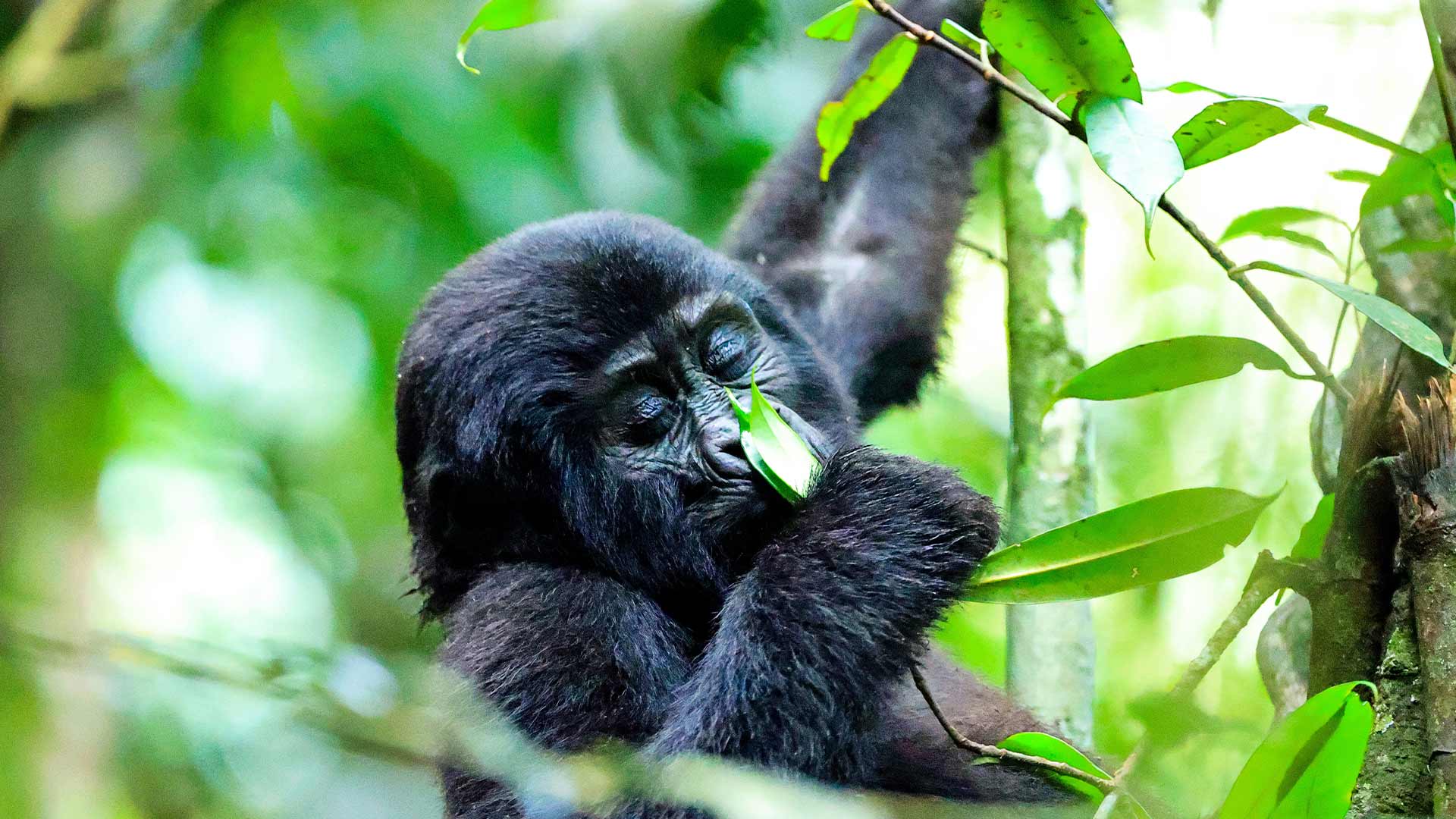Destination
Uganda
Tourism Slogan:
“The Pearl of Africa”

Known as “The Pearl of Africa,” Uganda is a land-locked country in East Africa, bordered by Kenya, South Sudan, DRC, Rwanda, and Tanzania. Uganda is famous for its gorilla trekking, lush forests, and being the source of the Nile. Ten national parks safeguard over 345 species of mammals and more than 1,000 species of birds.
East Africa.
English and Swahili are official languages.
Ugandan shilling (UGX).
241,550 km² (about 93,000 sq. miles).
45,935,046 (according to 2024 Census Results)
East Africa Time (UTC+3).
Bwindi Impenetrable Forest (gorillas), Queen Elizabeth and Murchison Falls National Parks, the Nile River source at Jinja, Lake Victoria, and Rwenzori Mountains.
Kampala (capital), Entebbe, Jinja, Gulu.
Entebbe International Airport (EBB).
Uganda Airlines.
Where to Go
Travel Guides
FAQ
General information about Uganda, the Pearl of Uganda.
The capital city of Uganda is Kampala.
English and Swahili are the official languages, but Uganda boasts over 50 local languages. Luganda is the most widely spoken indigenous language, especially in central Uganda, including Kampala.
The currency of Uganda is the Ugandan shilling.
Lake Victoria is the largest lake in Uganda and is also the largest tropical lake in the world.
Bwindi Impenetrable National Park is the national park that is home to almost half of the world’s mountain gorillas.
The largest market in Kampala is called Owino Market.
The traditional Ugandan drum is called the engalabi.
Matoke is the name of the Ugandan dish made from mashed plantains.
The best times to visit Uganda are during the dry seasons from June to August and December to February, ideal for wildlife safaris, gorilla trekking, bird watching, and outdoor activities.
Yes, most international visitors require a visa to enter Uganda. Visas can be applied for online via the Uganda Immigration portal or obtained upon arrival at major entry points like Entebbe International Airport.
Yes, Uganda is generally considered safe for tourists. Travelers should follow standard safety guidelines such as avoiding isolated areas at night, safeguarding valuables, and staying updated with local travel advisories.
